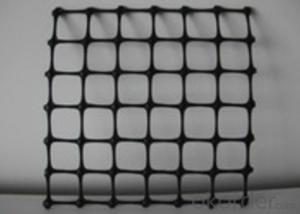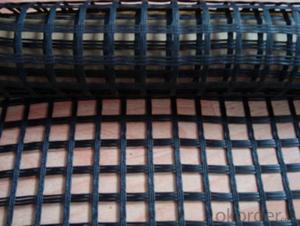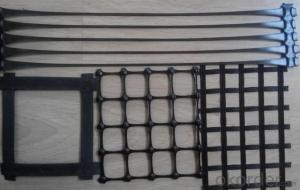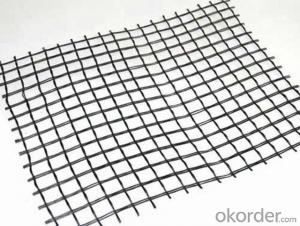Polypropylene Plastic Biaxial Geogrids with CE certificate for Road construction
- Loading Port:
- Qingdao
- Payment Terms:
- TT OR LC
- Min Order Qty:
- 10000 g/m²
- Supply Capability:
- 600000 g/m²/month
OKorder Service Pledge
OKorder Financial Service
You Might Also Like
Structure of Polypropylene Plastic Biaxial Geogrids Description:
Biaxial geogrids can be used to enhancement of permanent bearable toft including roads and railways embankment, slopes, tunnel, airfields, parks, docks and ground prevent tunnel from crack occurring.Further solidity slopes to proof water and soil from losses.
Main Features of Polypropylene Plastic Biaxial Geogrids:
Enhance the bearing capacity of road foundation and extend the duration of roads.
High strength,excellent tenacity
Prevent road surface from collapse, crack and being dirty.
Be convenient for construction, timesaving and cut down the cost of maintenance.
Creep,corrosion and abrasion resistance
Polypropylene Plastic Biaxial Geogrids Images
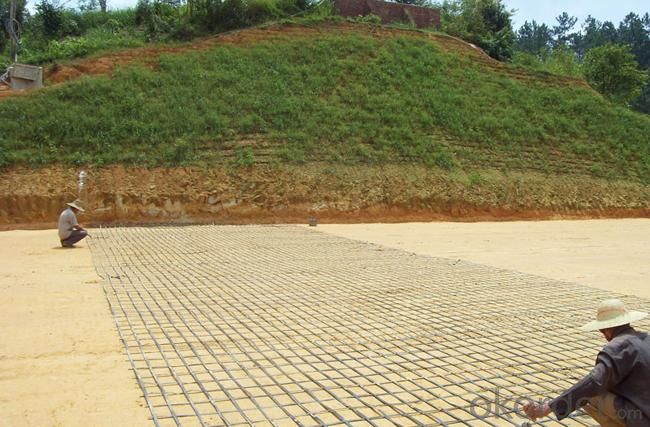
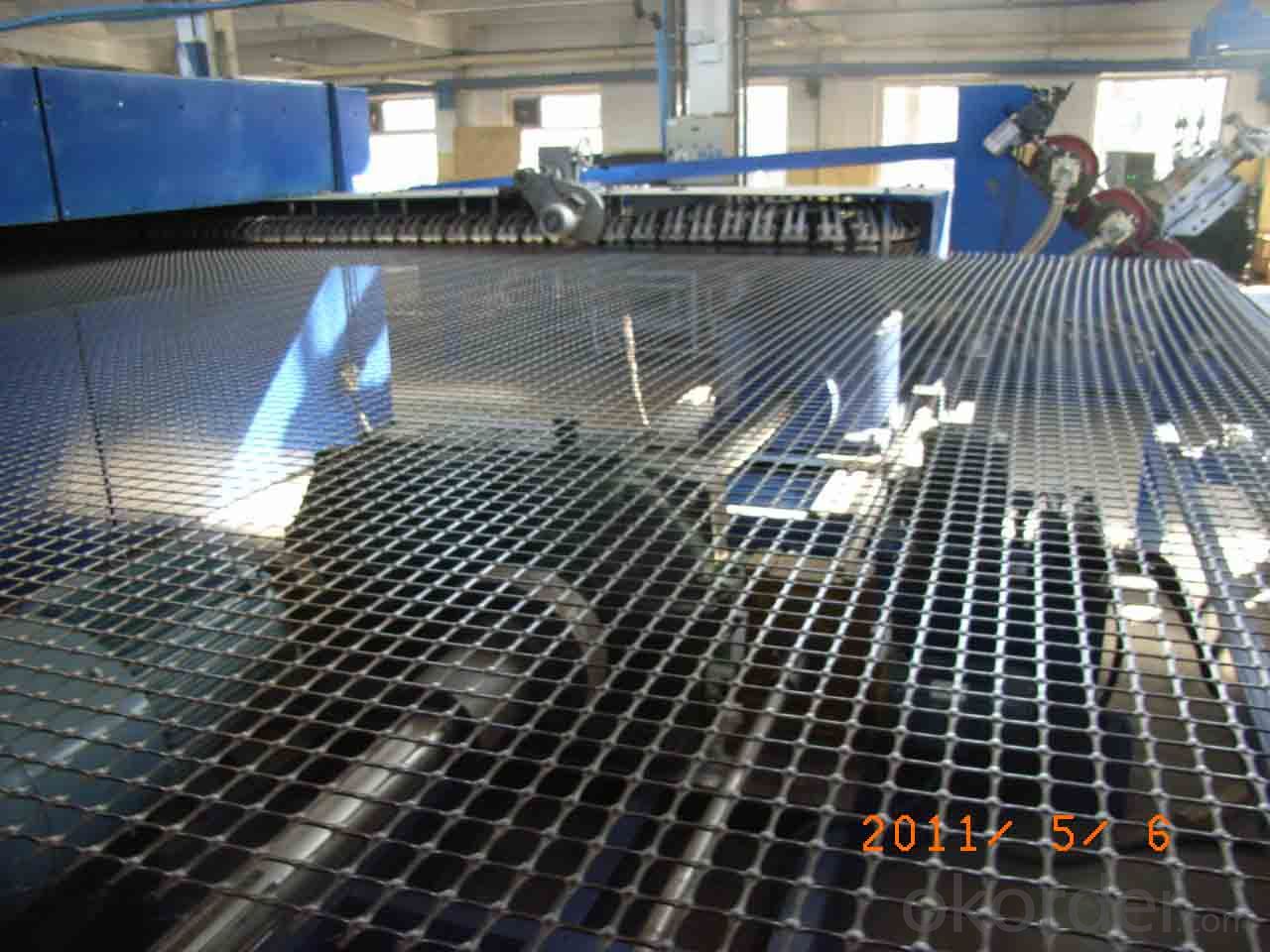

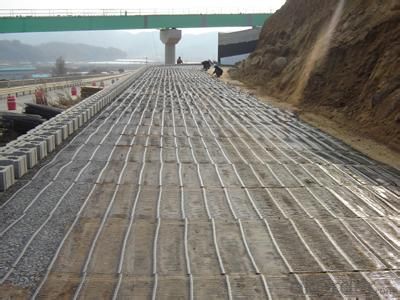
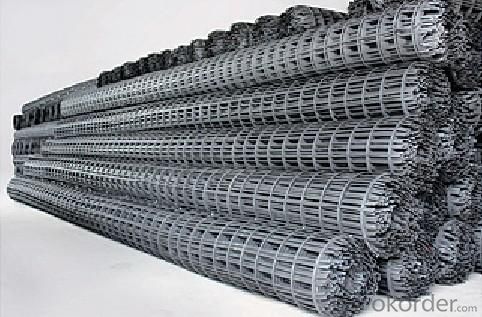
Polypropylene Plastic Biaxial Geogrids Specification:
Index Properties | Test Method | Unit | GG1515 | GG2020 | GG3030 | GG4040 | |
MD TD | MD TD | MD TD | MD TD | ||||
Polymer | -- | -- | PP | PP | PP | PP | |
Minimum Carbon Black | ASTM D 4218 | % | 2 | 2 | 2 | 2 | |
Tensile Strength@ 2% Strain | ASTM D 6637 | Kn/m | 5 5 | 7 7 | 10.5 10.5 | 14 14 | |
Tensile Strength@ 5% Strain | ASTM D 6637 | Kn/m | 7 7 | 14 14 | 21 21 | 28 28 | |
Ultimate Tensile Strength | ASTM D 6637 | Kn/m | 15 15 | 20 20 | 30 30 | 40 40 | |
Strain @ Ultimate Strength | ASTM D 6637 | % | 13 10 | 13 10 | 13 10 | 13 10 | |
Structural Integrity | |||||||
Junction Efficiency | GRI GG2 | % | 93 | 93 | 93 | 93 | |
Flexural Rigidity | ASTM D 1388 | Mg-cm | 700000 | 1000000 | 3500000 | 10000000 | |
Aperture Stability | COE Method | mm-N/deg | 646 | 707 | 1432 | 2104 | |
Dimensions | |||||||
Roll Width | -- | M | 3.95 | 3.95 | 3.95 | 3.95 | |
Roll Length | -- | M | 50 | 50 | 50 | 50 | |
Roll Weight | -- | Kg | 39 | 50 | 72 | 105 | |
MD denotes Machine direction. TD denotes transverse direction. | |||||||
FAQ
We have organized several common questions for our clients,may help you sincerely:
Q1: How about your company?
A1:Our company are one of the largest geosynthetic products supplier in the world.We have the products experience more than 20 years.Already export to USA/Germeny/Australia/Zambia/Brazil etc.more than 20 countries.Almost 10years.Our products including Geocell/Fiberglass Geogrid/Geomembrane/Geotextile/Geonet etc.
Q2.Does your products have good qualitity?
A2:Yes,we have do many big projects such as the 2008 Beijing Olympic BIRD NEST. Divert water from the south to the north project. And our products have CE certificate also.
Q3:How long can we receive the products after purchase?
A3:In the purchase of product within three working days, We will arrange the factory delivery as soon as possible. The pecific time of receiving is related to the state and position of customers.Commonly 15-20 working days can be delivery.
- Q:What is the distance between the waterproof plate and the top of the tunnel? What are the relevant provisions of this specification?
- The main production and operation of a variety of plastic geogrid, steel plastic composite geogrid, fiberglass geogrid, warp knitted polyester geogrid
- Q:How do geogrids improve the performance of geocell-reinforced slopes?
- Geogrids improve the performance of geocell-reinforced slopes by providing additional tensile strength and stability. They act as a reinforcement layer within the geocell structure, distributing loads more evenly and reducing the risk of slope failure. Geogrids also help to control soil erosion by preventing the movement of soil particles, enhancing the overall durability and longevity of the geocell-reinforced slopes.
- Q:How do geogrids improve the stability of steep slopes?
- Geogrids improve the stability of steep slopes by providing reinforcement and support to the soil through their tensile strength. When installed horizontally or at an angle within the soil, geogrids help distribute the load and reduce the potential for slope failure by increasing the soil's resistance to sliding and erosion. Additionally, they enhance the overall stability by preventing excessive soil movement and promoting better compaction, thereby increasing the slope's shear resistance.
- Q:How to connect the geogrid with the panel in the reinforced earth retaining wall?
- The geogrid reinforced earth retaining wall can be divided into two parts: one end of the panel reinforcement is fixed, and the other end is provided with tension force until the geogrid is stressed and the earth retaining wall and the reinforced earth retaining wall with no panels are added
- Q:What is the typical thickness of a geogrid?
- The typical thickness of a geogrid can vary depending on its intended use, but it typically ranges from 0.5 to 3 millimeters.
- Q:How long do geogrids typically last?
- Geogrids typically have a lifespan ranging from 20 to 75 years, depending on various factors such as the quality of the material, environmental conditions, and the level of stress they are subjected to.
- Q:Can geogrids be used in foundation stabilization?
- Yes, geogrids can be used in foundation stabilization. Geogrids are commonly used in civil engineering and construction projects to reinforce and stabilize soil and foundations. They provide additional tensile strength to the soil, preventing lateral movement and improving overall stability.
- Q:Are geogrids resistant to moisture absorption?
- Yes, geogrids are generally resistant to moisture absorption. They are made from materials such as high-density polyethylene (HDPE) or polyester, which have inherent moisture resistance properties. This resistance to moisture absorption helps to maintain the stability and strength of geogrids in various construction and civil engineering applications.
- Q:What are the design considerations for geogrid-reinforced pavements on soft soils?
- Some design considerations for geogrid-reinforced pavements on soft soils include the selection of appropriate geogrid material and configuration, determining the required stiffness modulus of the geogrid, considering the long-term performance and durability of the geogrid, analyzing the potential for geogrid creep and soil consolidation, evaluating the potential for geogrid installation damage or displacement during construction, and ensuring proper soil compaction and drainage to prevent soil consolidation and settlement.
- Q:What are the factors that affect the cost-effectiveness of geogrid-reinforced structures?
- There are several factors that can affect the cost-effectiveness of geogrid-reinforced structures. Firstly, the type and quality of the geogrid material used can significantly impact the overall cost. Higher-quality geogrids may initially be more expensive but offer better long-term performance, potentially reducing maintenance and repair costs over time. Additionally, the design and engineering of the structure play a crucial role. Properly designed geogrid-reinforced structures can optimize material usage and minimize construction costs. The expertise and experience of the engineers and contractors involved also contribute to the cost-effectiveness, as their knowledge can help avoid unnecessary expenses and ensure efficient construction. The specific site conditions, such as soil characteristics and slope stability, are also important factors. Geogrids are typically used to enhance soil stability, so the suitability of the soil for reinforcement and the extent of reinforcement required can impact costs. Difficult terrain, challenging access, or the need for additional site preparation can also increase costs. Lastly, the lifespan and durability of geogrid-reinforced structures should be considered. While geogrids are designed to be long-lasting, factors like environmental conditions, loading requirements, and proper installation can affect their performance. Investing in high-quality materials and proper installation methods may initially increase costs but can result in longer service life and reduced maintenance expenses in the long run.
1. Manufacturer Overview |
|
|---|---|
| Location | |
| Year Established | |
| Annual Output Value | |
| Main Markets | |
| Company Certifications | |
2. Manufacturer Certificates |
|
|---|---|
| a) Certification Name | |
| Range | |
| Reference | |
| Validity Period | |
3. Manufacturer Capability |
|
|---|---|
| a)Trade Capacity | |
| Nearest Port | |
| Export Percentage | |
| No.of Employees in Trade Department | |
| Language Spoken: | |
| b)Factory Information | |
| Factory Size: | |
| No. of Production Lines | |
| Contract Manufacturing | |
| Product Price Range | |
Send your message to us
Polypropylene Plastic Biaxial Geogrids with CE certificate for Road construction
- Loading Port:
- Qingdao
- Payment Terms:
- TT OR LC
- Min Order Qty:
- 10000 g/m²
- Supply Capability:
- 600000 g/m²/month
OKorder Service Pledge
OKorder Financial Service
Similar products
New products
Hot products
Related keywords
